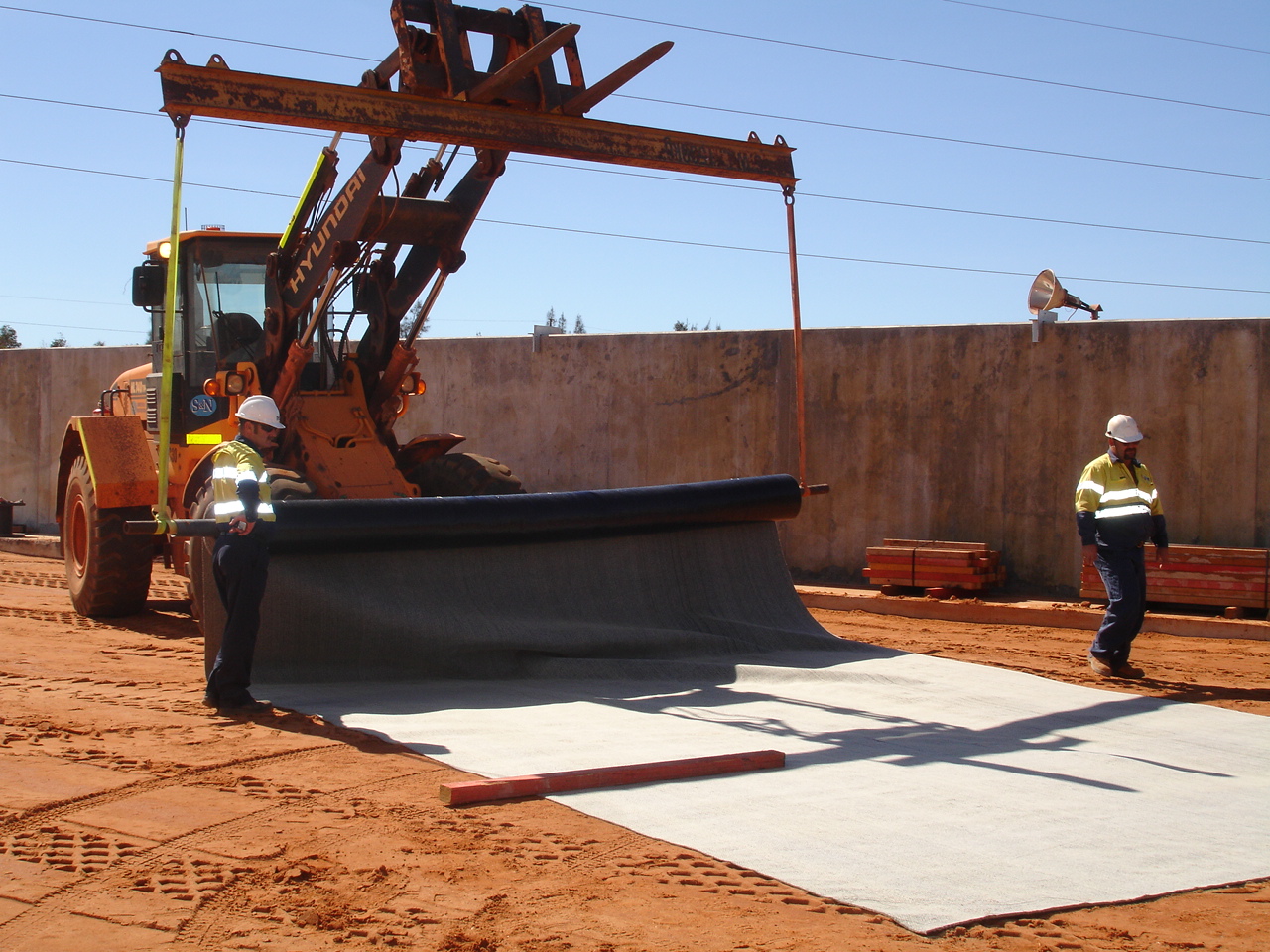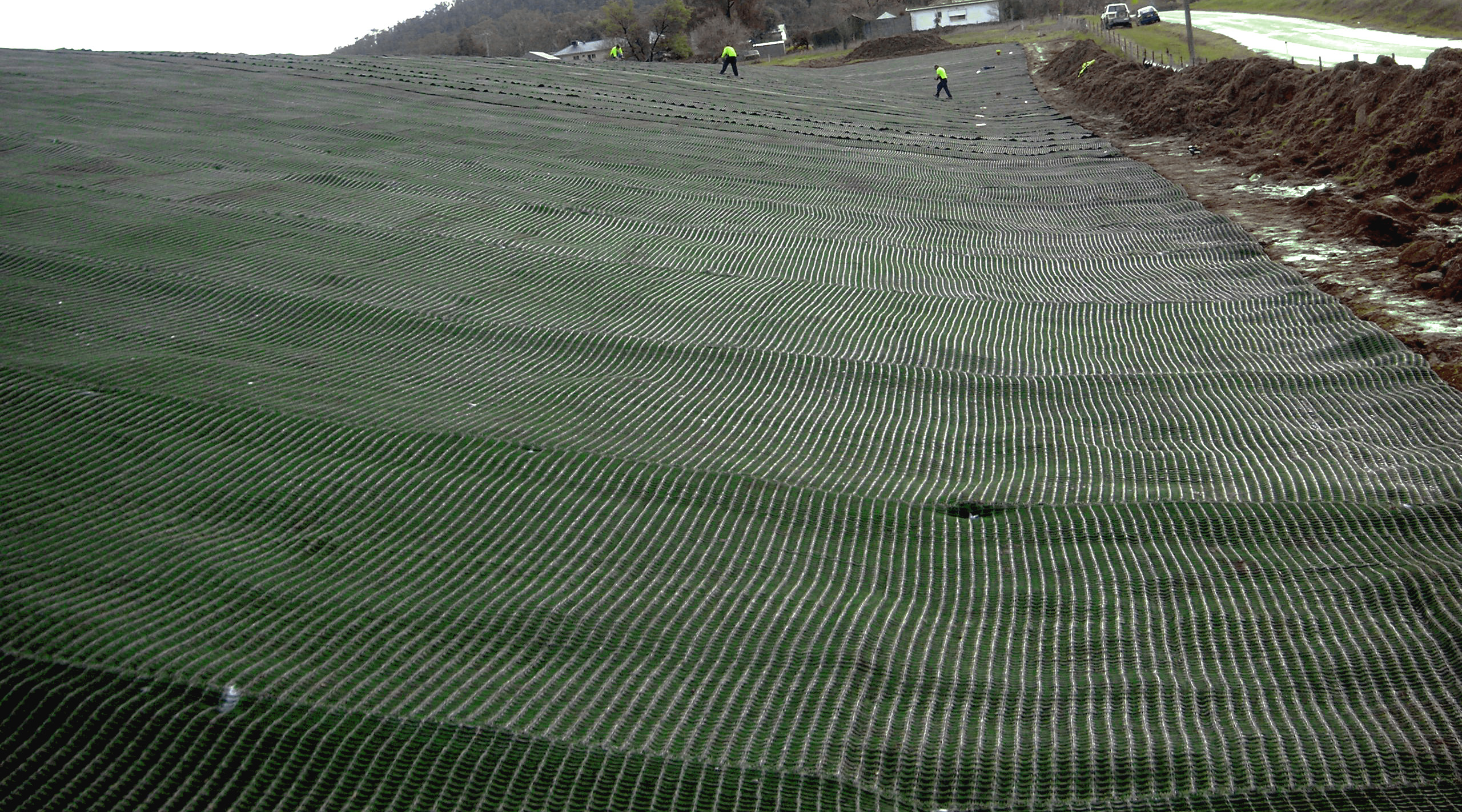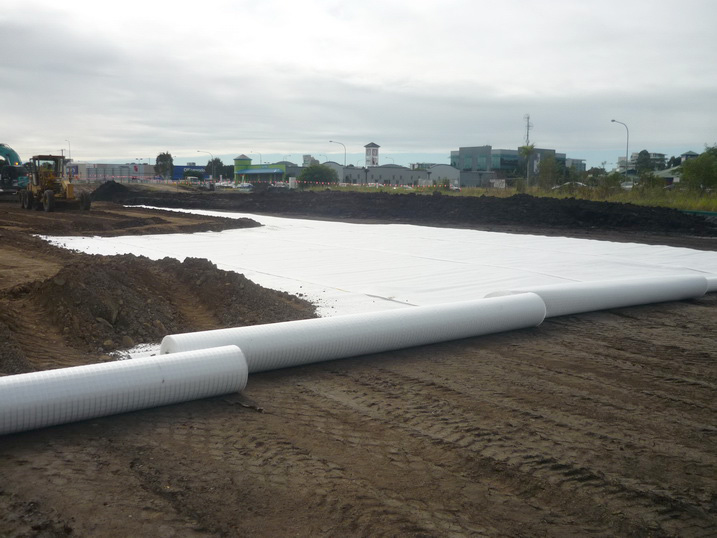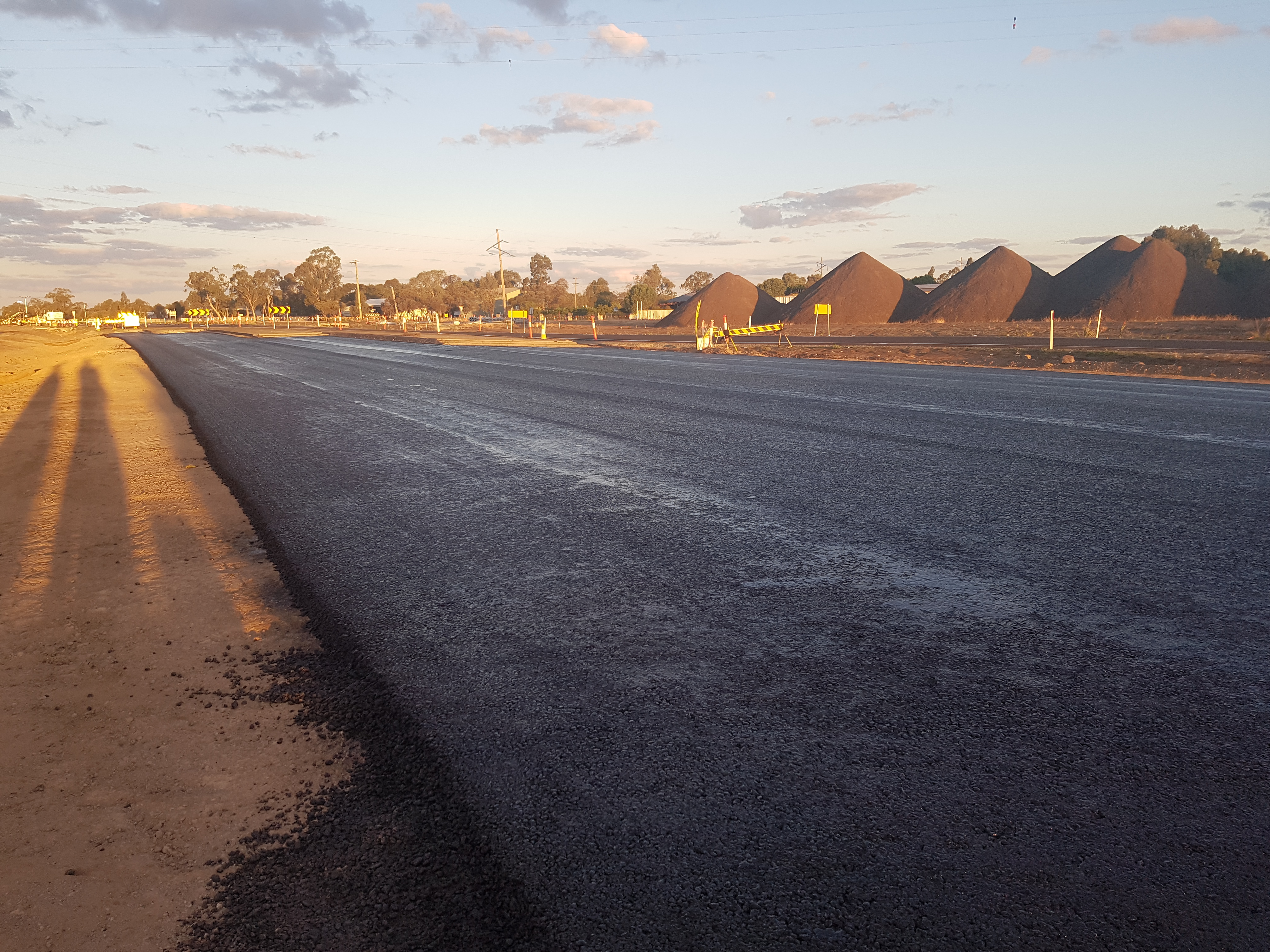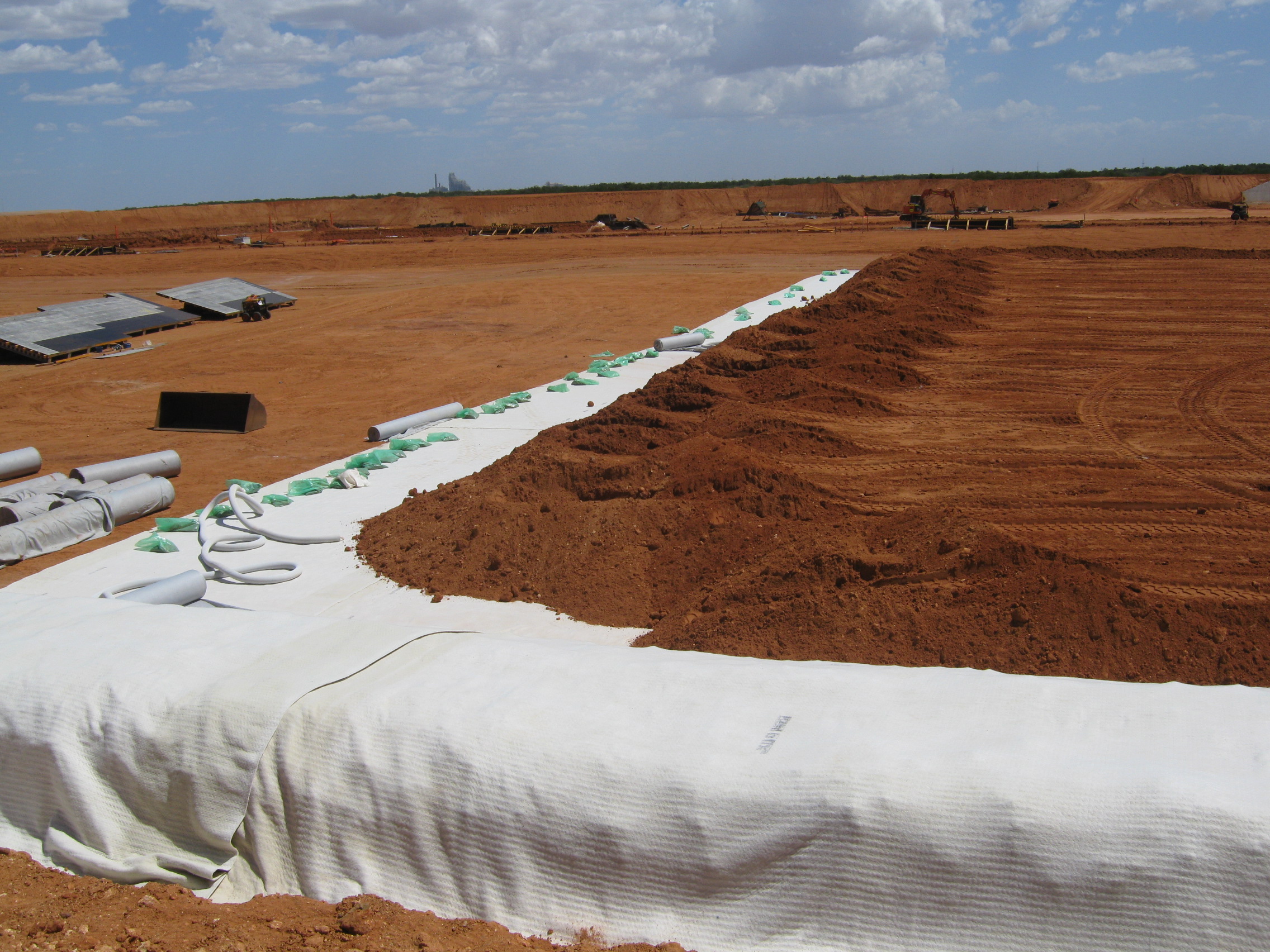Geosynthetic Clay Liners
Details
- Product Type Geosynthetic Materials
- Regions Auckland, Christchurch, New South Wales, Northern Territory, Queensland, South Australia, Tasmania, Victoria, Western Australia
Contact
- Chris Smith 0297254321
- Website Visit
- Email chris@globalsynthetics.com.au
ISupplier
- Company Name Global Synthetics
- ISupplier Profile Visit

About
Bentofix® Geosynthetic Clay Liner (GCL) is a factory produced wide width rolls of bentonite “sandwiched” between layers of geotextile. GCL’s are an engineered replacement for traditional clay lining of proposed containment structures. Bentofix® Thermal Lock geosynthetic clay liners (GCLs) – also known as geosynthetic clay barriers (GBR-C) – are needle-punched, reinforced composites that combine two durable geotextile outer layers and a uniform core of high-swelling powder sodium bentonite clay. This forms a uniform, multi-directional, shear-resistant hydraulic barrier with self-sealing and re-healing characteristics. Global Synthetics Geosynthetic Clay Liners offer the designer an engineered equivalency to clay without the costly import and placement and quality control costs associated with this traditional method. The volume of containment may be significantly increased with the use of a Global Synthetics Geosynthetic Clay Liner as the product offers equivalency to very thick layers of compacted clay.
Sustainability Outcomes
Innovations in product design have enabled geosynthetic clay liners to offer a sustainable solution that can help reduce cover to landfill caps by overcoming dessication issues. The recent development of a unique coated product combines the proven benefits of the Bentofix® Geosynthetic Clay Liner with a specialty polyethylene extruded coating. This coating is directly applied during the manufacturing process, removing potentially hazardous materials from the Bentofix products. The use of polyethylene in the coating provides several benefits, including a remarkable and proven history of high resistance to chemical attack from many leachates found in landfill applications. The combination of the geosynthetic clay liner and polyethylene coating creates an impermeable barrier that can withstand the harsh conditions of landfill environments while minimizing environmental impacts. NAUE is committed to using high-quality bentonite and does not chemically alter the material with excess polymers, ensuring optimal performance. The resulting product is a reliable and sustainable solution that can help reduce cover to landfill caps by overcoming dessication issues, providing environmental benefits while maintaining high standards of performance and safety. The innovations in geosynthetic clay liners demonstrate the potential for sustainable solutions in the construction industry.
Applicable Credits
| IS v1.2 | Inn-1 , Lan-3 , Mat-1 , Was-1 |
| IS v2.1 | Inn-1 , Rso-1 , Rso-6 |
| Lan-3 (ISv1.2) | Contamination and remediation | Geosynthetic Clay Liners (GCLs) are a sustainable solution for projects that assess contamination and perform remediation. GCLs provide an impermeable barrier to prevent the migration of contaminants, requiring less excavation and construction material, resulting in reduced environmental impacts and costs. The production and transportation of GCLs have a lower carbon footprint compared to other materials, and the natural clay mineral used in GCLs, bentonite, reduces the need for synthetic materials. GCLs can be easily installed, reducing the need for heavy equipment and shortening the construction time, which also reduces environmental impacts. |
| Was-1 (ISv1.2) | Waste management | Geosynthetic Clay Liners (GCLs) are an effective solution for sustainable waste management plans and practices. GCLs provide an impermeable barrier that prevents the migration of contaminants, reducing the risk of environmental pollution. By utilizing GCLs in waste management systems, the amount of waste requiring excavation and transportation can be reduced, resulting in decreased greenhouse gas emissions and costs. The use of GCLs also extends the life of existing waste containment systems and promotes the use of sustainable resources, as GCLs are made with natural clay minerals. Easy installation reduces the need for heavy equipment and construction time, further reducing environmental impacts. |
| Mat-1 (ISv1.2) | Materials footprint measurement and reduction | Geosynthetic Clay Liners (GCLs) offer several sustainable benefits that reduce the lifecycle environmental impacts of materials. They require less excavation and construction material than traditional liners, reducing construction costs and environmental impact. The natural clay mineral used in GCLs, bentonite, is a sustainable resource that reduces the need for synthetic materials, promoting efficient use of resources. |
| Inn-1 (ISv1.2) | Innovation | Geosynthetic Clay Liners (GCLs) contribute to Innovation Challenge 8 – Sustainable Suppliers and iSupply |
| Rso-1 (ISv2.1) | Resource Strategy Development | Geosynthetic Clay Liners (GCLs) offer several sustainable benefits that reduce the lifecycle environmental impacts of materials. They require less excavation and construction material than traditional liners, reducing construction costs and environmental impact. The natural clay mineral used in GCLs, bentonite, is a sustainable resource that reduces the need for synthetic materials, promoting efficient use of resources. |
| Rso-2 (ISv2.1) | Management of Contaminated Materia | Geosynthetic Clay Liners (GCLs) are a sustainable solution for projects that assess contamination and perform remediation. GCLs provide an impermeable barrier to prevent the migration of contaminants, requiring less excavation and construction material, resulting in reduced environmental impacts and costs. The production and transportation of GCLs have a lower carbon footprint compared to other materials, and the natural clay mineral used in GCLs, bentonite, reduces the need for synthetic materials. GCLs can be easily installed, reducing the need for heavy equipment and shortening the construction time, which also reduces environmental impacts. |
| Rso-6 (ISv2.1) | Material Life Cycle Impact Measurement and Management | Geosynthetic Clay Liners (GCLs) offer several sustainable benefits that reduce the lifecycle environmental impacts of materials. They require less excavation and construction material than traditional liners, reducing construction costs and environmental impact. The natural clay mineral used in GCLs, bentonite, is a sustainable resource that reduces the need for synthetic materials, promoting efficient use of resources. |
| Inn-1 (ISv2.1) | Innovation | Geosynthetic Clay Liners (GCLs) contribute to Innovation Challenge 4 – Sustainable Suppliers and iSupply |

